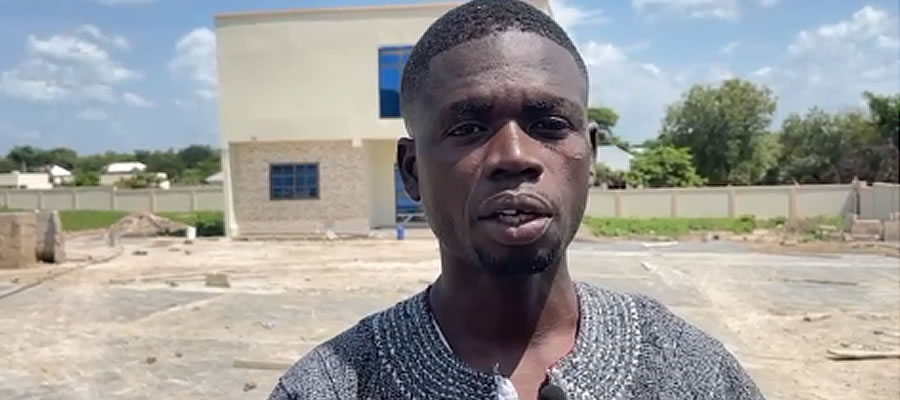

Main Sources of Water for Drinking and Other Domestic Use
One of the government’s major concerns is household access to improved sources of water since it has a strong relationship with the health of the population. Access to water is closely connected with sanitary conditions in living quarters, and is particularly essential for the prevention of communicable diseases, as well as cleanliness and general comfort of the residents.
Main source of water for drinking
Table 8.10 presents the main source of drinking water for households. About two-thirds (71.8%) of the households in the district depends on bore-hole, pump and tube well compared to 33.4 percent for the region. A total of one out of every five households in the district depends on pipe-borne water (public tap/standpipe, outside and inside their dwelling). None of the households depend on rain water and tanker supply or vendor for the supply of drinking water but 1.4 percent and 0.1 percent respectively uses sachet and bottled water as main sources of water for drinking.
Main source of water for domestic purposes
Table 8.10 also presents the main source of water used by the households for other domestic purposes and the analysis followed the same pattern as observed under drinking water. The highest proportion (70.8%) of households in the district use water from bore-holes, pumps and tube wells for other domestic purposes and 19.6 percent use pipe-borne for other domestic purposes. The dependence on rain water for other domestic purposes in the district is less than one percent but 8.3 percent uses water obtained from rivers or streams. Less than one percent of the households (0.1%) depend on unprotected well for domestic purposes.
Bathing and Toilet Facilities
Information on bathing and toilet facilities is considered important for housing as well as public health policy. Table 8.11 shows bathing facilities and toilet facilities used by households in the district. With reference to bathing facilities, 30.0 percent of the household’s uses own bathroom for exclusive use whiles 20.4 percent use shared separate bathroom in the same room in the district. Almost three out of every 10 households (27.7%) in the district use bathroom in another house and open space around house. The analysis shows that one out of every 20 households (5.0%) use public bathing facilities relative to one out of every six households (16.7%) who use private or shared open cubicle.
As many as more than two out of every five households in the district (43.9%) has no toilet facilities and subsequently, resort to the use of bushes and fields to discharge human excreta while 16.0 percent use the private pit latrine. A total of 34.2 percent of the households uses public toilet facilities such as KVIP, bucket or pan. It is observed that significantly low proportions of households use KVIP (2.2%) and bucket or pan latrine (0.1%).
Method of Waste Disposal
Disposal of refuse has diverse effects on the health status of people who reside in the district. Table 8.12 shows the method of solid and liquid waste disposal by households in the district. Public dumping in open spaces is a major practice in the district as three out of every four households (75.1%) use that for disposal of solid waste while 7.1 percent damps refuse in public containers. It also emerged from the analysis that one out of every 20 households burns their solid waste while 9.9 percent of the households practice indiscriminate dumping of rubbish.
In relation to liquid waste disposal, more than one-half (57.6%) of the households throw their waste onto the compound and 36.2 percent throwing it onto the street or outside dwelling. It is just less than one percent (0.7%) of the households that discharges liquid waste through the sewage system in the district and another 2.9 percent throw their liquid waste into gutters.
Date Created : 11/23/2017 4:30:35 AM













 facebook
facebook
 twitter
twitter
 Youtube
Youtube
 +233 593 831 280
+233 593 831 280 0800 430 430
0800 430 430 GPS: GE-231-4383
GPS: GE-231-4383 info@ghanadistricts.com
info@ghanadistricts.com Box GP1044, Accra, Ghana
Box GP1044, Accra, Ghana